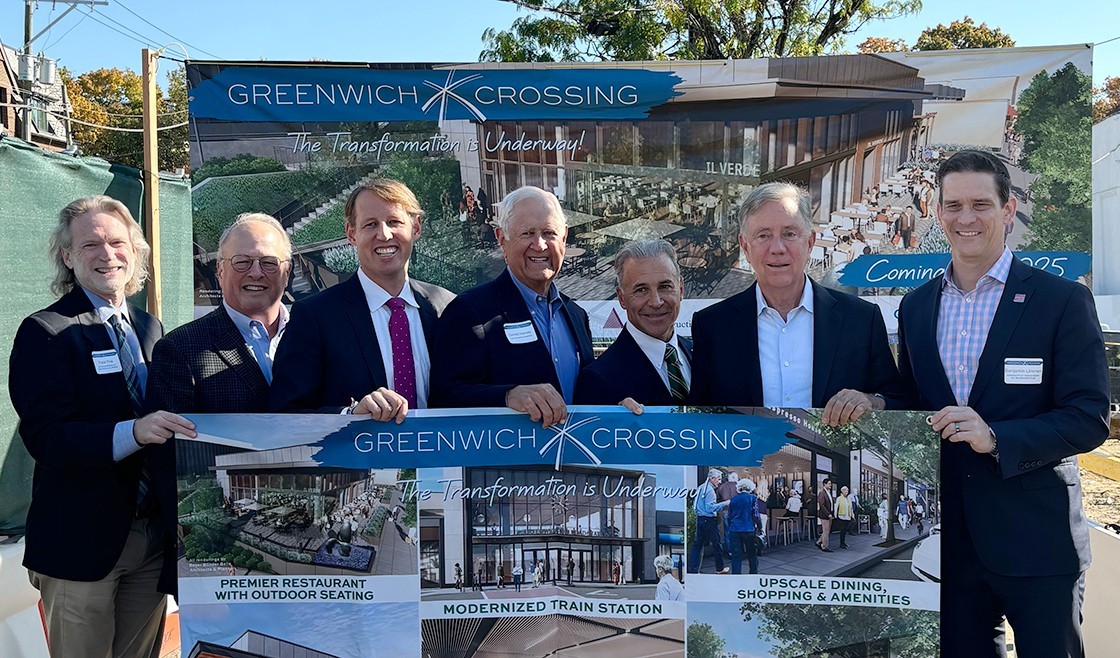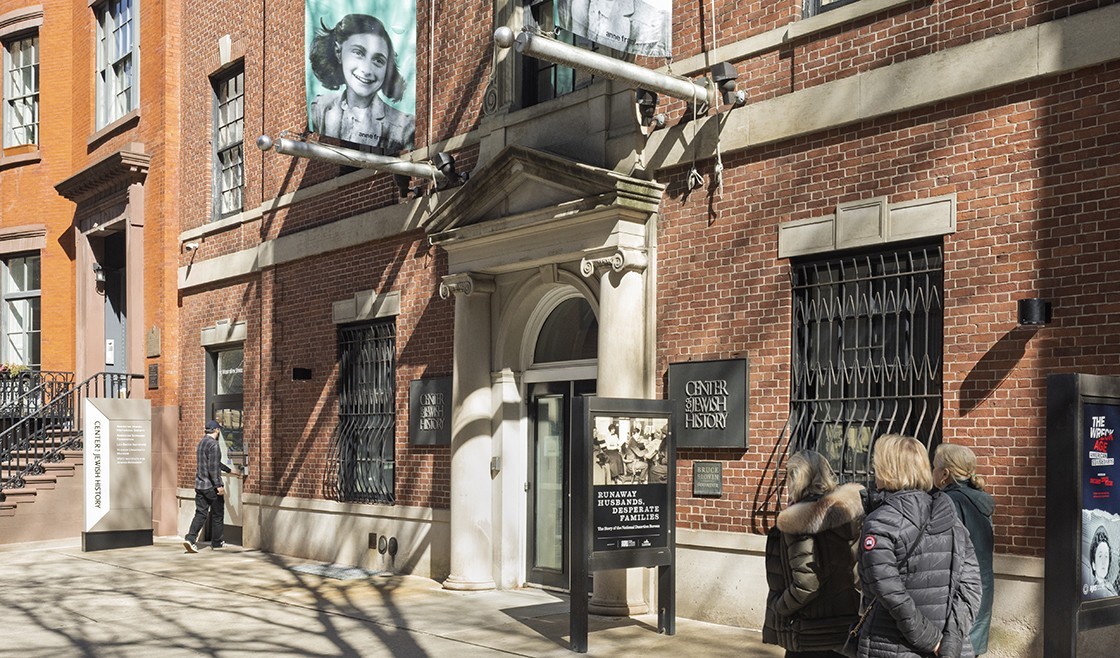Ashforth Launches $30M Transformative Greenwich Redevelopment Project
STAMFORD, CT – The Ashforth Company officially commenced its $30 million Greenwich revitalization project on Monday morning with the start of construction on a 5,000-square-foot premier restaurant. This new dining destination, featuring expansive outdoor seating, is an initial phase of the redevelopment that will also include a transformed Greenwich Train Station and renovated retail spaces along Railroad Avenue, aimed at reinvigorating the area.
At the construction site, elected officials, local business owners, and community members gathered to be a part of the project’s launch. Governor Ned Lamont and Greenwich First Selectman Fred Camillo joined The Ashforth Company’s leadership team to deliver remarks on the project’s significance for the local economy and community.
“Today, we’re not just building a structure – we’re creating a brand-new, exciting experience for Greenwich residents and visitors alike. We are thrilled that our expansive redevelopment, which we have named Greenwich Crossing, will completely transform and revitalize the train station and the surrounding retail, serving as an impressive and vibrant gateway to the heart of downtown Greenwich,” said Ryan Harvey, CEO & President of The Ashforth Company.
In addition to the construction of the anchor restaurant, renovations of the existing storefronts are underway. The train station renovation is on schedule to begin in May 2025 and the entire project is expected to be completed in the fall of 2025, as noted on greenwichcrossing.com.
Aside from Citibank and Signature Cycle, which will remain in their existing locations, the anchor restaurant and other storefronts are available for lease.
“Greenwich Crossing will become an extension of Greenwich Avenue, one of the premier pedestrian shopping destinations in the region. We are excited it will attract more visitors and business opportunities to the downtown area, contributing to the overall economic growth of Greenwich,” added Harvey. “We are incredibly proud and thankful to all who supported us in getting this project underway, including the Town of Greenwich, the Planning & Zoning and Architectural Review Committees, the CT Department of Transportation, Metro-North Railroad, and the Greenwich community. Also, our extraordinary architect, Beyer Blinder Belle, our amazing team of employees, and design and construction partners.”
The $30 million revitalization project will feature a redesigned and welcoming train station, a new anchor restaurant with large sliding glass doors and expansive outdoor seating, modernized mixed-use space, new pedestrian and commuter pathways, and improved access to the train platform. All will be renovated to provide new retail storefronts and tenant spaces, connecting the active retail streetscape of Greenwich Avenue to the Greenwich Train Station. Beyer Blinder Belle’s design thoughtfully incorporates materials that emphasize the project’s civic importance, drawing inspiration from nearby historic landmarks like the original town hall and former post office, for which BBB provided historic preservation consulting services in 2014.
“BBB is proud to be a part of The Ashforth Company’s redevelopment of the Greenwich Railroad Station and adjacent Railroad Avenue retail and restaurant areas into the new Greenwich Crossing, a legacy project that will benefit the town of Greenwich and the entire region,” said Frank J. Prial, Jr., Principal at Beyer Blinder Belle Architects & Planners. “We listened carefully and worked closely with the entire community to provide a more welcoming gateway, extend the downtown shopping experience, and create a place which celebrates the unique spirit of Greenwich.”
“At A.P. Construction our mission is to complete projects that exceed expectations and endure the test of time. Greenwich Crossing will not only modernize the area but also introduce a vibrant, welcoming atmosphere that invites visitors and enhances the downtown experience. We are committed to creating a destination that everyone can be proud of,” said Andrew Ashforth, CEO & President of A.P. Construction and Co-Chair of the Board of The Ashforth Company.
Greenwich Crossing will include beautifully landscaped space at the corner of Railroad Avenue and Steamboat Road, surrounding the anchor restaurant area and providing convenient public access to the Metro-North platform. The restaurant will offer abundant outdoor seating and a “green roof”, designed with soil and plantings that serve a critical role in water quality and management.
Additionally, new street trees will be planted the length of Railroad Avenue to Arch Street and new plantings will be added along the eastern end of the Metro-North platform and along Arch Street up to the Metro-North overpass. These areas have been designed by Eric Rains Landscape Architecture.
All areas of Greenwich Crossing will be planted with a mix of native and ornamental evergreen and deciduous trees and shrubs. These plants are selected for their seasonal appeal, pollinator benefits and the habitat they provide for birds. The planting buffer between the building and the Metro-North platform will feature a “green screen” of evergreen.
The event concluded with remarks from Darrell Harvey, Co-Chair of the Board of The Ashforth Company. “The Ashforth Company and the families of our ownership have been committed to Greenwich for over 100 years, so this project is very personal for us. We are thrilled and proud that we are building Greenwich Crossing, which is an incredibly important and transformative development that will serve the Greenwich community and the local region for years to come. It’s a collaboration and we thank everyone involved.”
The design and construction team includes Developer: The Ashforth Company; Construction Manager: A.P. Construction, a division of The Ashforth Company; Architect: Beyer Blinder Belle Architects & Planners LLP; MEP/FP Engineer: AKF Group LLC; Structural Engineer: Desimone Consulting Engineers; Land Surveyor/Civil Engineer: Redniss & Mead; Landscape Architect: Eric Rains Landscape Architecture, LLC; Lighting Consultant: Lightcraft; and Leasing Agent: Joyce Storm, Storm Partners, LLC.
Additional project information, construction updates, and leasing opportunities are featured on www.greenwichcrossing.com.


